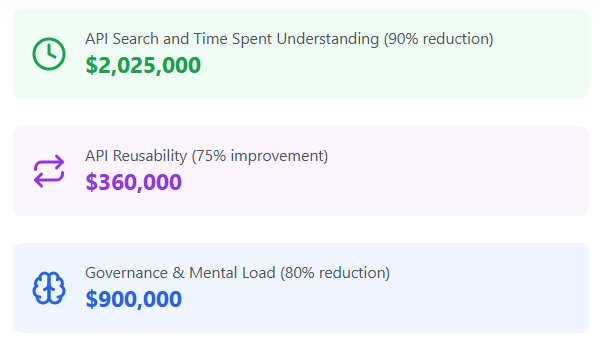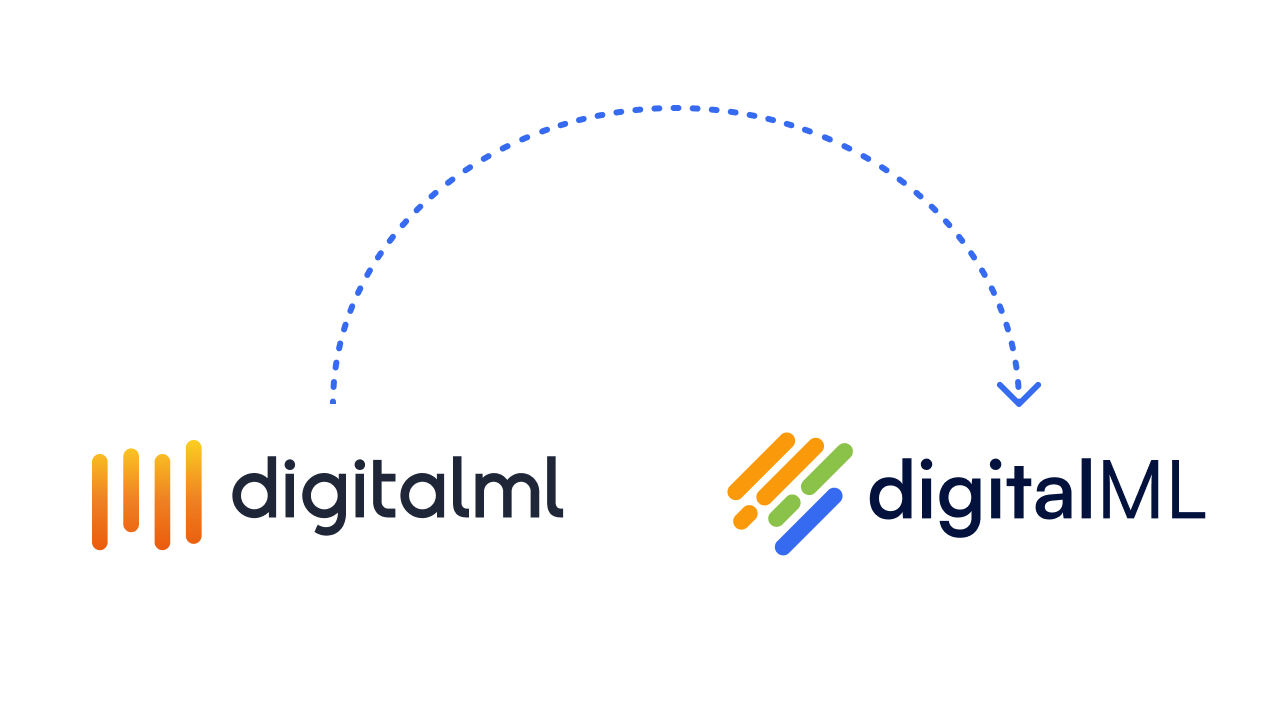A version of this article was originally published by our CEO, Jeremy Sindall, on Forbes Technology Council.
Many enterprises are now at a crossroads for their API strategies, having developed APIs ad hoc because they believed just “doing APIs” would enable digital transformation. What comes next is exciting: it’s the opportunity to look back at how our API ecosystems are working, iterate and improve, and ultimately unleash the real strategic value of our API programs! With that in mind, here’s where we think API strategy is heading in 2023 and beyond, and how you can start embracing these trends in your organization.
Here’s 5 trends to watch for 2023 and beyond.
1. Commoditization of API gateways
After rapid adoption of APIs over the last decade, most enterprises have now stood up multiple API gateways and runtimes to deploy and run their assets on. SmartBear found the average number to be two. And that’s just for APIs! When scaled out to all integration asset types, the result is a complex landscape. Gateways are just an entry ticket, and with so many product offerings (many of them open source), it’s becoming a commoditized tool.
An API gateway running a handful of public APIs is no longer enough to compete at digital; it’s a complex ecosystem of 1000s of assets. Enterprises want to be able to quickly swap out technologies and platforms, while avoiding vendor lock-in. The same goes for runtime API management platforms which overlay functionality on top of the gateway(s). They’re missing out on the real value that lives upstream and downstream of the gateway in our API frameworks.
- To the left it’s the domain driven design, discovery and reuse, and federated lifecycle management that drives agility and efficiency
- To the right it’s the application bundling, API monetization, and self-service consumption
All ultimately combined to produce customer-centric products and services that drive growth and revenue.
We see that reflected in traditional runtime API management providers’ recent functionality expansion, e.g. moving left to offer more design and governance features, or right into the marketplace and monetization space. And the analyst experts agree too: Gartner predicted nearly a year ago that “by 2025 less than 50% of APIs will be managed, as exponential growth surpasses the capabilities of traditional API management platforms.” This leads us to our next trend to discuss: will 2023 see enterprises adopting an “end-to-end” API management tool or a connected ecosystem of specialized tooling?
How to embrace this trend
As Gartner’s Mark O’Neill said at last year’s APIdays Paris, “the do-it-all API gateway-saurus is going extinct”. Embrace more focused and decentralized gateways as part of your architecture alongside your legacy e.g. ESBs and future-state e.g. EDA, but focus on:
- The processes, people, tech left and right that builds the value from your APIs (and other assets)
- Preventing vendor lock in
- Connecting your runtime architecture together e.g. through one connected catalog
Learn More: Read how API abstraction can help prevent vendor lock in
2. A connected ecosystem of API tooling
When it comes to API tooling, should your enterprise be looking for one platform that does “everything” or a connected framework of tools? Much like the “API gateway-saurus”, we’re also expecting enterprises to turn away from the potential “API management-saurus” The reason for this is threefold:
- Enterprises have different (and multiple) API-related priorities and use cases, which change over time. We’re all on a maturity journey; your 2023 might be prioritizing API curation and governance, while someone else has reached that level of maturity and is now focused on productizing APIs in a marketplace.
- We might all have different priorities, but we need tooling that can deliver said priorities quickly and to a gold standard. It’s hard to see how one platform can successfully do this for every requirement at every phase of an extended API lifecycle; especially when most API management vendors are so new in their feature sets for what happens before and beyond runtime implementation.
- Everything upstream of the gateway needs to be done in an implementation agnostic way, away and abstracted from the gateway and production code (a domain which is the main source of revenue for API management platforms).
Instead, we’ll see enterprises building out a connected and composable framework of API tooling that suits their priorities now, with the flexibility for the future.
How to embrace this trend
- Define your API priorities for the year, and assess if your current tooling can deliver
- Prioritize investment in tooling that is agnostic of, but can be connected to, every area of your velocity framework
3. Moving beyond REST
A mature API program now means more than only RESTful APIs, it’s any combination of:
- different API types (e.g. public, partner, internal, and composite)
- emerging architectural styles such as Async API and GraphQL
- data, applications, and all other types of integration asset
- and don’t forget legacy Services e.g. SOAP – they aren’t going anywhere!
Evidence shows that organizations are already adopting multiple types, patterns, and platforms in their API strategies. Here’s just two examples:
- Postman’s 2022 State of the API Report found adoption growth in many API technologies (e.g. 4% YoY increase for GraphQL use).
- Forrester predicts the maturation of event-based APIs and event-driven architectures in the coming years.
So what’s coming next? Enterprises need to manage these growing types and patterns in a holistic fashion, but in a way that each flavor of API can be designed, governed, and managed appropriately. There’ll be a big focus on consolidating all integration assets into one connected catalog, and how to expand lifecycle management to drive quality yet flexibility and democratization for all the different types.
How to embrace this trend
- Leverage API tooling that can support and unify all API types
4. Capabilities exposed in whatever format’s needed (and/or is most efficient)
Much of the last few years in the API space has been focused on supporting and improving the provider and consumer developer experiences. And while fantastic for productivity and efficiency when it comes to developing and adopting APIs, it’s just one piece of the ecosystem puzzle. Enterprises are now focusing on how to expand the audience of their API programs and support the personalized lifecycles of this expanded audience. There are some key areas within the organization that this includes:
- Leadership: catching on to the importance of APIs, and will soon be asking “what’s our API coverage and how high-quality is it?” in the boardroom
- Business roles e.g. Digital Product Owners: becoming key stakeholders in API strategy and lifecycle (after all, as Forrester famously says, an IT-led API strategy is doomed to fail)
- Enterprise Architects: uniquely perched to bridge the gap between what the business wants and what IT has in place to deliver it
- Compliance and security teams: who should be able to self-service their audits on the organization’s API portfolio
- Support and DevOps
- Orchestration teams
We’ll see a push for tailored views of APIs, and establishing a programmatic process that makes each persona’s lifecycle personalized and democratized.
How to embrace this trend
- Look for API catalog tooling that provides personalized views of your APIs e.g. a product owner can see an abstracted Design, provider developer can see technical specification
5. API reuse to minimize technical debt
Over-proliferation of APIs and subsequent sprawl is becoming a challenge for enterprises. API efforts have been working on frameworks to build quickly. But without proper strategy and prioritizing reuse, there’s a risk that APIs will become just another layer of technical debt. NoName Security’s 2022 API Security Trends report found the average number of APIs in use in enterprises to be over 15,000. Many will be duplicates, many will be redundant, and without proper cataloging and management, many are likely to be flying under the radar of our security and governance policies. We expect to see a mindset shift in API teams and the wider business, as well as tooling and process from quantity to quality; where APIs need to become reusable (and composable) business building blocks.
The starting point when it comes to API development should always be “is there something available in our catalog that I can reuse for this use case” rather than “I have my use case, time to build a new API”. This is where the promises of API-first for efficiency, digital business agility, and minimized risk and technical debt can be realized.
How to embrace this trend
- An upstream holistic catalog that captures all API types, across all lifecycle states. Cataloging only production APIs does not solve the problem.
- Lifecycle management that includes feedback and collaboration, and easy updates/iterations/extensions for APIs
- All aligned to an automated and flexible governance model, so APIs are actually reusable
Learn More: Watch how to drive enterprise composability and reuse
How do you see the API space evolving throughout 2023? We’d love to hear your opinions, just drop us a message!




